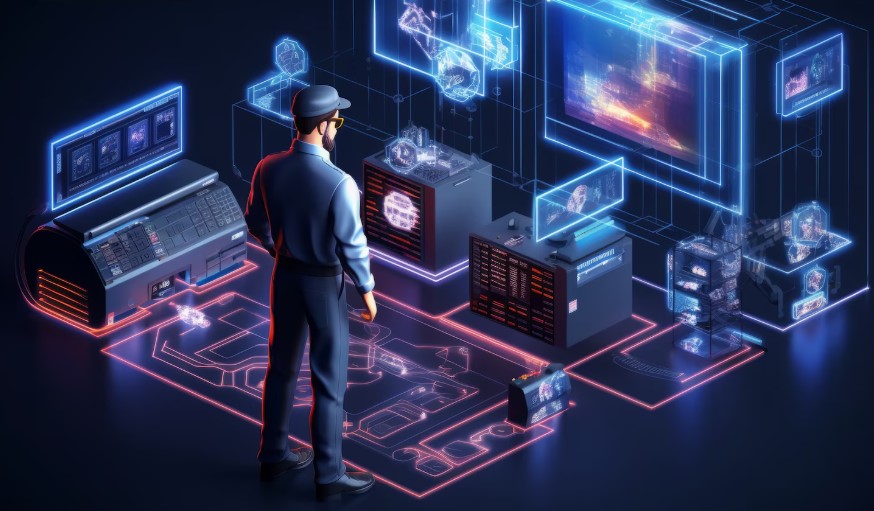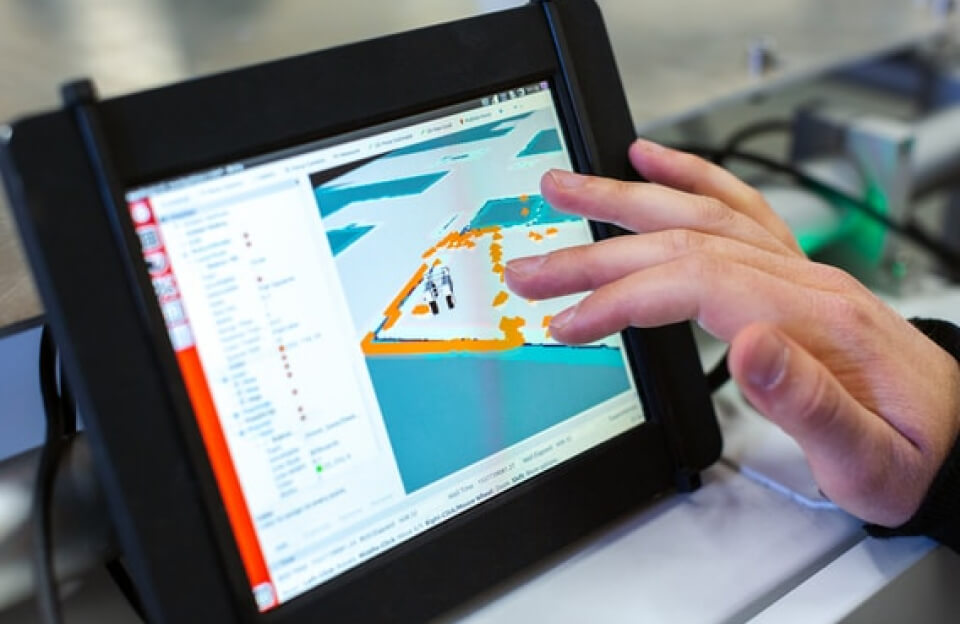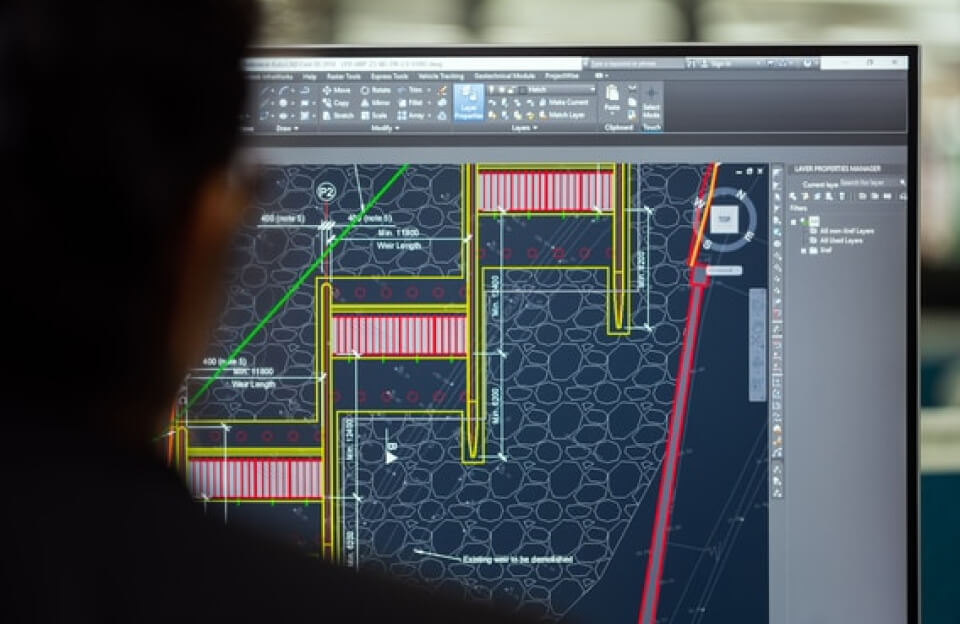Edge computing systems have become a revolutionary technology in America with the speedy progress of conventional technologies. For the past couple of years, the market has seen almost a marathon race among potential entrants trying to design and pursue the design of the most impressive innovation in the field of information technology. With the revolution, the Internet of Things (IoT) has continued to influence edge computing software, aiming to replace a couple of traditional technologies primary feature of the IoT network-which is engineered to control industrial systems.
In this guide, we will walk you through the essence of edge computing software. Additionally, we will explore its importance and relevance to business operations across the U.S. and discuss various methods to effectively reap the benefits of implementing edge computing software.
What Is Edge Computing Software?
At its core, edge computing is where data processing is done locally at the edge of a network, versus sending all the data to centralized cloud servers. Edge computing avoids total dependence on remote data centers because it allows devices, sensors, and gateways to analyze and respond to data practically in real-time.
The approach also promotes bandwidth savings and hence a much more cost-effective environment. This leads to enhanced system performance and faster reaction times. As a result, edge computing software is being increasingly sought after by industries across America—from health and manufacturing to retail, finance, and transportation—to stay competitive.
Why Edge Computing Software is Exploding in Popularity Across the United States
Due to major technological and economic trends, edge computing is now being rapidly adopted across the United States.
- The Growing Number of IoT Devices
Millions of interconnected gizmos possess the vast expanse of infrastructure across a landscape. So businesses must secure a convenient way capable of managing and promptly evaluating the massive data streams, and so leveraging edge computing for real-time decision-making.
- Demand for Real-Time Processing
Industries such as autonomous vehicles, smart cities, robotics, and telemedicine require instant response capacities. This lack of chronometrics among cloud-only systems is nullified ingeniously by edge computing.
- Rising Data Privacy Concerns
It is here that data is made legitimately private as well as saved from the concentration of cyber threats. This especially counts for American firms with concerns about regulatory implementations for PACS, PCI DSS, or other forms of financial compliance.
- High Cloud Costs
The broader the cloud structure, the higher the operating costs. Edge computing software thus helps businesses process data onsite, which in turn significantly reduces bandwidth and storage costs.
Key Features of Modern Edge Computing Software
To fully unpack the utility of edge computing, first understand its advanced components, and then explore how they work together to deliver its innovative capabilities.
- Real-Time Information Processing:
Moreover, real-time processing of data is perhaps its most widely appreciated feature. Consequently, this capability provides a fundamental edge over other competitors that operate more slowly and leave greater room for errors.
- Offline Operations:
Many companies in the United States run operations in redundant areas such as farms, oil fields, construction areas, and warehouses, where network connectivity is far from ideal. Edge computing software anticipates this and ensures operations keep going even with no Internet connection.
- Data Filtering and Segmenting
Not all data needs to be taken into the cloud; with edge computing software, ancillary data is being purged while highly valuable data is prioritized.
- Device-to-Device Communication
On the technological side, edge devices allow direct data communication without going through the cloud, thereby reducing lag time and improving overall performance.
- Increased Security
Furthermore, by processing data locally, organizations reduce external exposure to sensitive information, thereby making it significantly more difficult for cyber attackers to intercept.

Benefits of Edge Computing Software to U. S. Businesses
In addition, the benefits of edge computing software extend far beyond speed of service and ease of use. Consequently, organizations can expect significant operational improvements, which in turn lead to higher customer satisfaction and a stronger financial bottom line.
- Faster Data Processing
Reduced latency due to an opportunity to analyze more data on-site is vital for any industry that relies massive on real-time action, e.g., market landscape, robotics, healthcare monitoring.
- Cost Effective
Moreover, edge data processing ensures that minimal data travels across the cloud network and storage. As a result, this practice ultimately reduces operational costs.
- Security and Regulatory Compliance
The trip of data back to its source just trivializes rules and enhances cybersecurity. This is particularly relevant to US companies that deal with regulation.
- More Sustainability
The software for edge computing does not utilize the whole cloud’s connectivity. So, that makes sure the system continues running even through the eventuality of outages or network disruptions.
- Better User Experience
The way that digital industries such as mobile apps, amazing retail, and the like can transact their businesses means the process of real-time printing gives a good and smooth front on the part of the user.
Top Industries in the USA Taking Advantage of Edge Computing Software
From coast to coast, different industries across the United States are, in one way or another, utilizing software related to edge computing for some minor improvement or enhancement for optimum application.
- Healthcare
Edge computing is serving real-time patient monitoring, medical device management, and secure data processing to help hospitals.
- Automotive and Autonomous Vehicles
In self-driving automobiles, instant decision-making is an edge computing advantage.
- Manufacturing
Factories use edge systems to monitor equipment performance, to anticipate maintenance, and to enhance production processing.
- Retail
Checkout systems, tracking inventory, and customer engagement-personalization facilities in brick-and-mortar stores currently employ edge computing solutions.
- Smart City
Traffic systems, public safety tools, utilities, and infrastructure must be catered to with real-time data processing that is fast enough.
- Agriculture
Edge sensors must give farmers the ability to collect analytical data about soil, livestock, and crop parameters, without really needing to make extended trips to the clouds.
How to Recognize a Good Edge Computing Software Platform
When it comes to adopting an edge computing solution, it’s a matter of selection. There are various factors that companies must put in front, more than a few of which are
- Scalability
Software needs to increase the chances for your business to grow from what the data is able to handle within its existing parameters for data size.
- Security
Please ensure the presence of the following: encrypted algorithms, password controls and access levels, and security oversight for regulatory purposes.
- Fear of integration
Assume it. Make sure that the software blends seamlessly with your existing equipment, devices, and anything related to the ecosystem-probably even your cloud platform.
- Latency performance
Observe the actual real-time performance latency to determine that it falls within the expected category of some operational necessity of your organization.
- Promoting Support and Maintenance
Most of all, support for solidifying new reservations and giving out reasonably regular maintenance for the continual approach is a key factor for sustainable success.
The Future of Edge Computing Software in the USA
The viewpoint in the USA is more than promising for the Future of Edge Computing Software. The United States is moving towards their adoption extensively- these are the IoT, AI, Machine Learning, Artificial Intelligence, and Automation. Consequently, edge computing will move from being an add-on optional feature towards a standard mandate.
New advancements are being brought about:
- Edge intelligence forced by AI
- Edge performance is quicker thanks to 5G-enabled
- Hybrid edge-to-cloud architectures
- A substantial surge in cryptocurrency speculative investments by America’s larger tech companies
All these points will pave the path for edge computing to be the next wave of digital innovation.
Conclusion
Furthermore, with today’s edge computing software, digital transformation is revamping the topography of corporations in the United States. Providing real-time data processing and system enhancements means that edge computing is making its own space, becoming a critical cogwheel in modern quantitative technology. If a hospital, manufacturing plant, retail business, or intelligent infrastructure falls under the wings of your company, there is a lot to be gained by investing in edge computing software to increase work efficiencies and prepare the business for a future of helping itself.
You can very quickly look into edge computing software and how it can help enhance your operations if you expect to make headway in the fast-moving world of data-analysis mechanisms.



